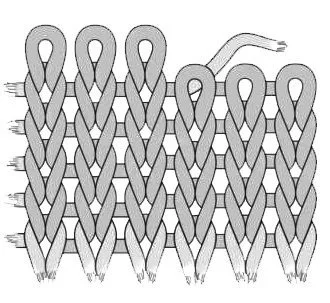Fabric’s Grainline
What is the grainline of fabric?
WOVEN FABRICS:
The grainline refers to the direction of the yarn. The grainline is there to guide the direction of the pattern placement, making sure the final garment conforms to the shape and drape intended by the designer. Every pattern needs to follow the fabric grainline otherwise you will get distortions that could change the way a garment turns out. The lengthwise yarns or straight grain of the fabric weave are the warp threads. The crosswise yarns or the cross grain of the fabric weave are the weft threads. The straight grain runs parallel to the fabric’s selvedge (the uncut edges of a fabric roll. The fabric’s edge has a continuous edging or border that stops the material from falling to pieces
DIFFERENT GRAIN LINES:
Fabric drape a certain way depending on how it’s cut.
Straight Grain- This is the most important grain as almost all sewing patterns are laid out along this grain. The straight grain runs parallel to the fabric selvedge meaning the grainline runs up and down a garment. Since warp threads are often longer, continuous-length yarns, the straight grain is the strongest.
Cross Grain- This grain runs perpendicular to the selvedge, the garment grainline will run around the body. A weft thread is a shorter length of yarn that crosses over the long warp thread as it is woven. This means the cross grain is not as strong as the straight grain. A garment may be cut on the cross grain depending on how the designer wants the result to look. A circle skirt may be cut on the cross grain.
Bias Grain- This grain runs at a diagnoal. When the material is cut on the bias, it allows the woven, warp and weft threads to stretch more than being cut on the other grains. Bias tape is cut on the true grain (45 degree angle).
Finding the grains are easy on newly purchased fabric-by-the-yard. What about on fabric that the salvage has already been cut off or if you are upcycling a garment? Lets find out!
Sometime it is very easy to visually see on a fabric, like on the shirt above. This shirt has 2 different colors in the weave going cross-grain. Therefore, the straight grain is perpendicular to the cross-grain. Other times it can be very difficult but a general rule of thumb is most garments are cut with the center front running along the straight grain. Here are a few tips to locate the straight grain:
Pull out a yarn strand- pull a cross-grain thread out from the fabric and see the path created by the missing thread.
Cut and tear- cut a small slit into the edge of the fabric and tear it apart.
Pull on the grains- simply hold a few inches of fabric between your hands and tug. If the fabric stretches, you are on the bias. Rotate the fabric and tug until you have no stretch. This technique will only cross out the bias grain and help you determine the straight or cross grain.
KNIT FABRICS
The grainline in stretch fabrics is known as direction. Knit fabrics are a series of loops. The lengthwise loops are placed called courses and the crosswise rows are called wales. The interlocking loops make the fabric stretch. Following the direction of the knit makes a difference to the drape.
To find the direction simply look closely at the loops and find the up and down direction.




